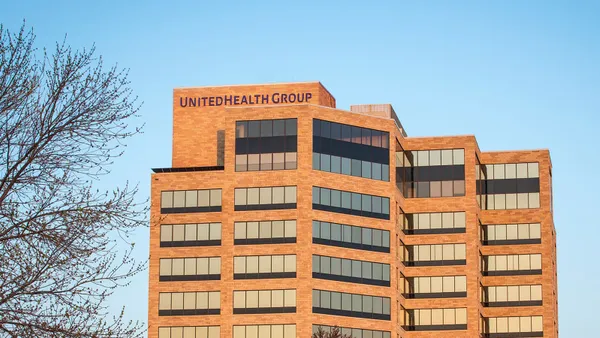Dive Brief:
-
Restrictive provider networks remain the norm in the Affordable Care Act exchange market, according to a new analysis from Avalere.
-
Narrow network plans, including health maintenance organizations (HMOs) and exclusive provider organizations (EPOs), will make up 72% of 2019 ACA plans, according to the report.
-
Most Americans have 10 days left to sign up for an ACA plan. The latest numbers through Nov. 24 show 2.4 million people signed up for a plan through the federal exchange website, which is below last year's pace. A handful of states offer extended open enrollment periods.
Dive Insight:
Narrow networks have become a common way for ACA payers, as well as Medicaid and Medicare Advantage plans, to contain costs. HMOs limit providers, restrict out-of-network care and require referrals, which payers say reduces unnecessary care and helps keep down costs. More restrictive plans are typically less expensive than plans with broader options such as a preferred provider organization (PPO) plan.
Restricted networks aren't so popular with providers and patients. Providers may feel forced into accepting an HMO or face losing business.
Avalere found that 53% of ACA plans will be HMOs in 2019. That's a decrease from 57% this year, but HMOs remain the most common type of plan in the market. Another form of restricted networks, EPOs, are expected to increase from 16% this year to 19% in 2019.
PPOs, which are the most common type of health plan in the employer-sponsored health insurance market, will make up 21% of ACA plans in 2019. Point of service plans, meanwhile, are expected to remain at only 6% of ACA plans next year.
Point of service and PPO plans offer broader coverage and are usually more expensive for both members and payers than HMOs.
Now, "narrow networks" don't always mean "bad" networks, sometimes they can drive patients to higher quality providers. BUT, narrow networks do require a lot more understanding/education for the patient to know what they're getting; education that is currently lacking
— Chris Sloan (@chrisavalere) December 4, 2018
Avalere's findings echo a Robert Wood Johnson Foundation report from the fall that found that only 29% of individual plans provided out-of-network coverage. That's compared to 58% more than three years ago. Small group market plans have cut out-of-network benefits, too (64% in 2018 compared to 71% in 2015).
Payers in Medicare Advantage and Medicaid managed care also use restricted networks as a way to control costs. A 2017 Kaiser Family Foundation study found that 35% of MA enrollees were in narrow-network plans in 2015 compared to 22% in broad-network plans.
Restrictive networks aren't nearly as common in employer-sponsored plans, which is how most Americans get their health insurance. Instead, businesses use other benefit designs to contain costs like higher deductibles.












